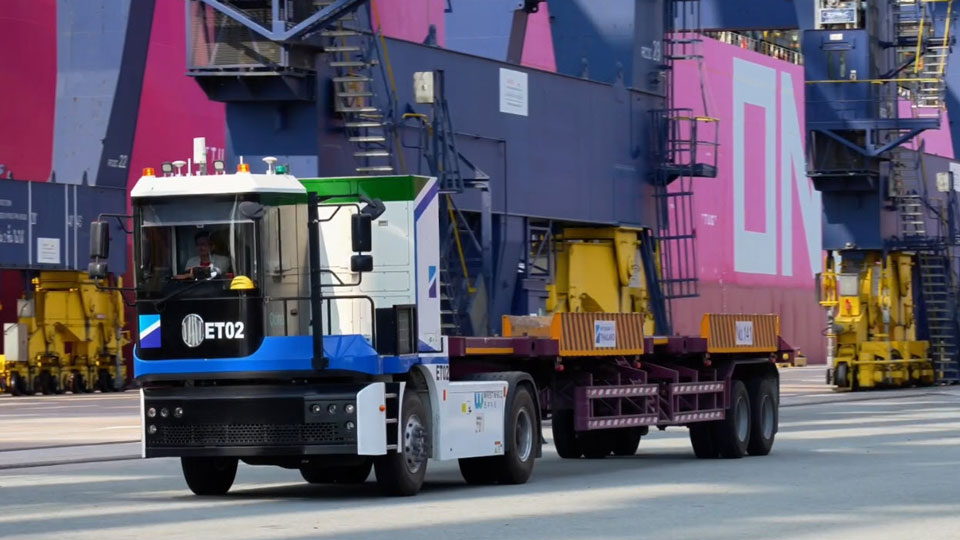From looming machines to the latest automobiles, the Toyota Motor Corporation understands the importance of technological progress. For Sakichi Toyoda, a skilled Japanese inventor born in 1867, it would have been impossible to predict how his initial inventions of looming technology would be fundamental to Japan’s biggest automobile company. However, it is safe to say that intellectual property (IP) and innovation are the very foundation upon which the Toyota Motor Corporation was established.

Creations of the mind produce results that are often difficult to predict. Be it groundbreaking discoveries such as penicillin, or even inventions that did not find the same success (such as umbrellas for the shoes – yes, they exist), it is usually difficult to pinpoint whether an idea will thrive and what relevancy it may have over time. The steady rise of new technologies, however, has rapidly shifted marketplace trends and the consumer products industry trends over the last century and well into the future.
The Toyoda family roots lay in carpentry, giving Sakichi Toyoda a good technical knowledge of instruments and how general structures work. After learning of the recent enactment of Japan’s full-fledged Patent Act in 1885, the eighteen-year-old man decided to focus his efforts on creating something new to help his local community. Five years later, this determination led to the invention of Mr. Toyoda’s first patent – a wooden Toyoda handloom – a machine that enabled higher levels of productivity and propelled the Toyoda family into the looming business.

Over the next forty years, Mr. Toyoda turned Toyoda Automatic Loom Works into a successful business, inventing and patenting a variety of automatic loom technology, including the Toyoda Type G Automatic Loom in 1924. Mr. Toyoda’s son, Kiichiro Toyoda, sold the patent to this invention in 1929, which provided enough starting capital to found the Toyota Motor Co., Ltd. (now Toyota Motor Corporation).
With such history, is it understandable the great importance Toyota Motor Corporation places on innovation. Companies that innovate tend to keep their products novel and competitive, as well as build upon the company’s image and branding strategy as a whole. This effective approach to branding, in which Toyota Motor Corporation protects not only their inventions but also their brands underscores the image of the company as having an innate culture of research and development.
Less than a century later, Toyota Motor Corporation has become Japan’s leading car manufacturer with a strong reputation for innovation and new technologies. The company has a worldwide presence in over 160 countries with production facilities located in twenty-eight countries manufacturing over nine million vehicles per year. Since 2009, Akio Toyoda, Mr. Toyoda’s great-grandson has provided strong leadership to the automotive manufacturer as president and CEO.

Innovation and branding: How different areas of IP intersect
Considering the interests of the Toyota Motor Corporation, it is important for the company to not only develop new technologies that are incorporated into their products and services, but to also properly translate those technologies into a branding system that can be understood and valued by the end consumer. The inventions and the brands by which they are represented to the public each require independent IP protections.
As stated above, the innovative looming technology created by Mr. Toyoda was subject to patenting, a legal procedure that grants the owner of an invention certain exclusive rights over it. While clearly an important part of the IP system, patent rights are usually limited to the protection of inventions and are not the best instrument to protect a company’s brands and image, its services, or products. For that, we have trademark rights.
With the WIPO Global Brand Database it is possible to explore the company’s more than 6,000 trademark applications or registrations worldwide simply by specifying the name of the holder in quotation marks – “TOYOTA MOTOR CORPORATION” or the Japanese equivalent “トヨタ自動車株式会社” – in the search box.

What part does the WIPO Madrid System play in Toyota Motor Corporation's international trademark acquisition strategies?
For companies such as Toyota Motor Corporation that require the registration of various trademarks in multiple countries, the WIPO Madrid System, an international trademark system, offers a cost-effective option via a single international trademark application. Under the WIPO Madrid System, a single application is filed with the national office, after which it is forwarded to WIPO for certification as an international application. The international application is submitted directly to the national IP offices of the designated countries, providing a faster and often less expensive route to registration.
According to Toyota Motor Corporation, the company’s proactive registration of their trademarks are used defensively as a way to expand the scope of protection of their corporate mark, taglines and the names of their innovative technology. As such, applications filed through the WIPO Madrid System bring several advantages to the company:
- lower costs;
- ablility to designate additional countries even after the submission of an application;
- fast and streamlined acquisition of rights; and
- a simple, centrally managed renewal system.
Toyota Motor Corporation and the WIPO Madrid System in practice
Toyota Motor Corporation has been incredibly proactive with the protection of their trademark assets. By seeking to register a great number of trademarks in many different countries, Toyota Motor Corporation recognizes the importance of protecting not only their inventions but also the distinctive signs of their products and services in the target markets. Registration of trademarks helps to protect their distinctive signs from counterfeiting as well as other forms of misappropriation.
The IP portfolio of Toyota Motor Corporation contains multiple trademarks registered using the WIPO Madrid System. Toyota Safety Sense™ is a great example of how the company is able to easily register their brands in numerous markets.
Toyota Safety Sense™ (WIPO International Registration No. 1282996)
Toyota Safety Sense™ is the name given to a bundle of features related to Toyota Motor Corporation’s advanced vehicle safety technology. Features include pre-collision pedestrian and bicyclist detection systems, dynamic radar cruise control for maintaining not only speed but a preset distance from the vehicle in front of you, a lane departure alert that helps the driver stay within the lane, and many more. By incorporating such award-wining features into many of its vehicles, Toyota Motor Corporation has taken vehicle safety to another level.
According to Toyota Motor Corporation, one of the main benefits of using the WIPO Madrid System is the ability to easily designate any of the over 100 Contracting Parties for international registration while maximizing cost-efficiency. In the case of Toyota Safety Sense™, the company designated over sixty countries, including Australia, India, Mexico, Russia and Singapore; thus, allowing them to target select jurisdictions -- potential key markets -- with strategically formulated branding.

Designed for innovation
In order to continue to be successful in the ever-changing area of innovation and branding, Toyota Motor Corporation understands the importance of protecting their inventions as well as their brands -- the means by which the communicate to consumers. From Mr. Toyoda’s first patent registration in 1890 to the company’s initial trademark registrations of the 1930’s, Toyota Motor Corporation has always strived to expand its IP portfolio by proactively valuing and protecting their intangible assets for over a century.



